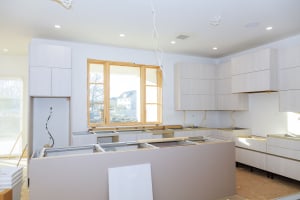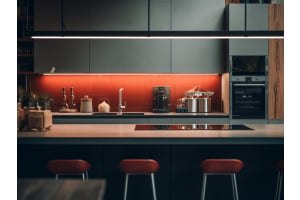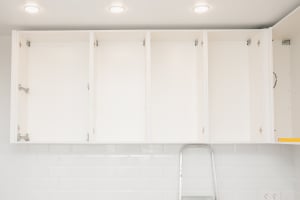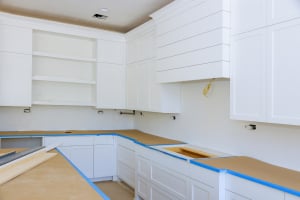When you spend your time and money on home design, the last thing you want to do is deal with damage. However, walls have a way of attracting scratches and dents. The good news is you can fix fluted wall panels by removing any debris, sanding the surface, choosing the right filler, applying and smoothing the filler, and reinforcing the panels.
In this post, we’ll explore the most effective repairs for your fluted panels. You can restore your panels to their former glory with a little time and attention.
Common Fluted Wall Panel Damage
There are common reasons why your fluted wall panels may become damaged. Understanding why the problem occurred can help you prevent further damage going forward.
Environmental Factors
Environmental factors may be the reason your fluted wall panels aren't looking the best. If your panels have been exposed to prolonged moisture, they can warp, discolor, or even grow mold. Water damage can also weaken the structural integrity of fluted paneling.
Physical Impact
One of the most common ways fluted paneling becomes damaged is through physical impact. For example, you're moving in a new dresser and knick the panel as you go by, causing scratches or chipping. Regularly inspecting your panels will help you identify any dings or dents before they worsen.
General Wear-and-Tear
Almost everything in your home is subject to general wear-and-tear; this rule is especially true in high-traffic areas. Minor impacts can compromise the surface quality and overall appearance over time.
Repairing Fluted Wall Paneling Step-by-Step
Before you skip right to how to cut fluted panels or how to make fluted wall panels, try to restore them before taking them down or starting again. Follow this step-by-step guide to the repair process:
Step One: Cleaning and Removing Debris
The first step is ensuring no dirt or debris is around the area you need to repair. A clean surface means paint and adhesive materials can do their job.
Step Two: Sanding the Surface
Sand the surface with a fine-grit sandpaper to smooth out any rough edges.
Step Three: Choosing the Right Filler Material
Select the correct filler material based on how much damage occurred. Wood filler suits minor cracks, while epoxy works better for deeper cracks and dents.
Step Four: Applying and Smoothing the Filler
Apply the filler to the cracks or dents using a putty knife. Use the knife to smooth out the surface once everything is filled. Use sandpaper after the filler is dry to create a seamless blend.
Step Five: Reinforce the Panels
You may need to check the structural integrity of the panels if there is significant damage. You can reinforce the area or reattach the panels if necessary.
Step Six: Matching Colors and Textures
Use a paint that closely matches the color and texture of the rest of the panels. Attention to detail is important here to ensure the repair doesn't stand out like a sore thumb.
Step Seven: Applying a Protective Finish
The last step is applying a protective finish like a clear sealant or varnish. These products will help protect the area from future damage.
How to Prevent Damage
You can extend the lifespan of your fluted panels by taking specific measures:
- Waterproofing: Apply a waterproof coating to lock out any moisture.
- Fix cracks and wear promptly: Repair at the first sign of damage before it gets worse. Regularly inspecting your panels will help you spot dents early.
- Clean panels: Use a mild cleaning product and a soft cloth to wipe down the panels routinely.
- Avoid impact: Avoid unnecessary contact with the panels to prevent dents and scratches. Leave a few inches between the wall and any furniture so it's not rubbing up against the panels.
In Summary
These steps can help you repair damage and restore the beauty of your fluted wall panels. Regular maintenance is crucial to ensuring the longevity of your wall decor–a little time and attention will go a long way, and you won't have to replace your favorite feature wall. If you are looking for new, high-quality wall panels, check out 27estore’s collection today!













